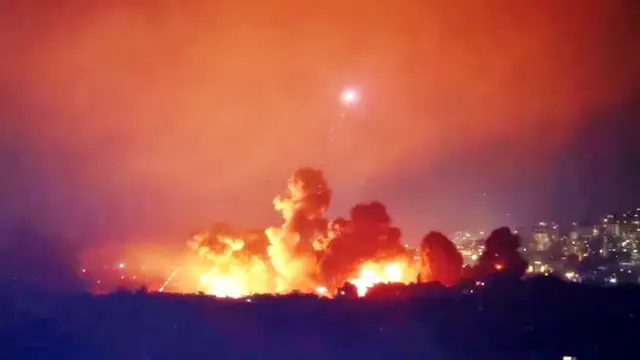On October 3, 2024, smoke and flames engulfed Beirut’s southern suburbs following a series of Israeli airstrikes. The Lebanese Health Ministry reported that at least 37 people lost their lives, and over 150 were injured due to these relentless attacks. This escalation marks a troubling continuation of Israel’s military actions against Lebanon.
A Wave of Destruction
The Israeli military launched multiple airstrikes targeting the Dahiyeh neighborhood in southern Beirut. These strikes utilized powerful bunker-buster bombs, with reports indicating that more than a dozen were dropped. Civilian buildings were the primary targets, raising concerns about the safety of residents in the area.
According to sources, the number of bombs used in this latest assault surpassed those used in previous strikes, including the one that killed Hezbollah leader Sayyed Hassan Nasrallah just a week prior. The vicinity of Beirut International Airport also faced bombardment, with Israeli media suggesting that the assassination of Hashem Safieddine, head of Hezbollah’s Executive Council, was a key objective of these attacks.
The Impact on Civilians
Witnesses in Beirut reported hearing loud explosions that shook buildings and set off car alarms. A source close to Hezbollah confirmed that there were 11 consecutive strikes on southern Beirut that night. The Lebanese National News Agency (NNA) described this as one of the most intense bombardments since the onset of the current conflict.
The strikes were so powerful that they echoed into the mountainous regions surrounding Beirut. Earlier that day, the Israeli army issued an urgent evacuation warning to residents in Burj al-Barajneh, advising them to leave due to their proximity to Hezbollah facilities.
Rising Casualties
Since the beginning of October 2023, the death toll from Israeli airstrikes across Lebanon has exceeded 1,700, with nearly 8,770 injured, according to government data. In retaliation, Hezbollah has launched numerous rocket and drone attacks targeting Israeli positions. The group has vowed to continue its operations as long as Israel persists in its military actions in Gaza, which have resulted in over 41,780 Palestinian deaths, predominantly among women and children.
Hezbollah’s response has included advanced weaponry, such as hypersonic ballistic missiles, aimed at occupied Palestinian territories. The group claims to have thwarted Israeli advances into Lebanon, inflicting significant losses on Israeli forces.
Ongoing Conflict
Hezbollah reported that at least 17 Israeli soldiers have been killed since the conflict escalated. In contrast, Israel has confirmed the deaths of two of its troops during intense clashes with Hezbollah. Since dawn on October 3, Lebanese resistance fighters have successfully repelled multiple attempts by Israeli elite forces to advance into southern Lebanon, causing heavy losses in both equipment and personnel.
A Lebanese political analyst recently highlighted Hezbollah’s operational strengths, warning that Israeli forces could become “sitting ducks” if they attempt a ground invasion of southern Lebanon. This statement underscores the precarious situation on the ground and the potential for further escalation.
Conclusion
The situation in Lebanon remains dire as Israeli airstrikes continue to wreak havoc on civilian areas. The rising death toll and the ongoing conflict between Hezbollah and Israeli forces paint a grim picture of the current state of affairs. As tensions escalate, the international community watches closely, hoping for a resolution to this ongoing crisis.

